| Name and Description -------------------------------------------------------- |
N = 1 | N = 2 | N = 3 | N = 4 | N = 5 | N = 6 |
|---|---|---|---|---|---|---|
| Vladimir Costescu My artistic creation is a recursive rendering of what is called the twindragon curve, which consists of two stacked Heighway dragon curves. My implementation involves a tiny bit of trigonometry: I use cos and sin in my formula for calculating the x and y coordinates of the next points. Wikipedia was my main source of inspiration: http://en.wikipedia.org/wiki/Dragon_curve#Twindragon. |
 |
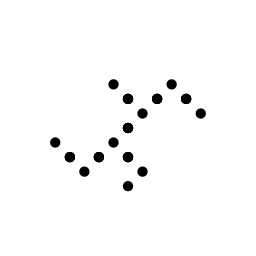 |
 |
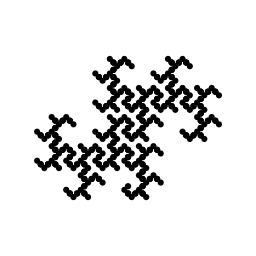 |
 |
 |
| Irene Lo My artistic creation is a variant of the Barnsley Fern. The leaves (or petals) alternate in color between red and magenta, and spiral outwards from the center. Each spiraling leaf appears to be composed of many compositionally identical, smaller leaves. The positioning of the leaf segments was created by Scott Draves and can be found at http://upload.wikimedia.org/wikipedia/en/8/86/Ifs-construction.png. The position of a pair of 'sub-leaves' can be found with respect to the position of their 'super-leaf'. The leaves themselves are composed of two arc segments, which are drawn separately. |
 |
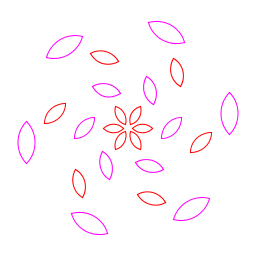 |
 |
 |
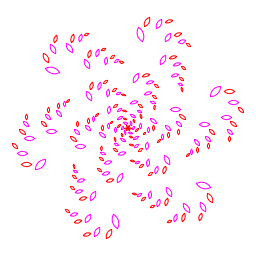 |
 |
| Adlai Felser My artistic creation follows a parametric function defined in the code from t to tmax, using tstep as an increment, and draws the recursive graphic of a tree pointing in the direction of the function at all times t, with the size of the tree decreasing as t increases. I used a while loop to move along the function and a recursive function "draw" to draw the trees. |
 |
 |
 |
 |
 |
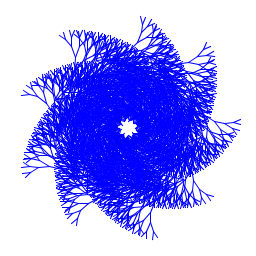 |
| Jaison Zachariah I used a recursive function to draw members of the Dance group Jabbawockeez. The goal was to have a front man with 2 behind him and offset a bit with similar poses. This pattern continues in order to produce the appearance of a whole crew. There is a background image. I had to play around with a lot of the values to get the dancers in the appropriate orientation. |
 |
 |
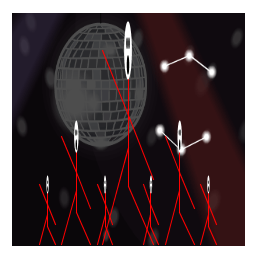 |
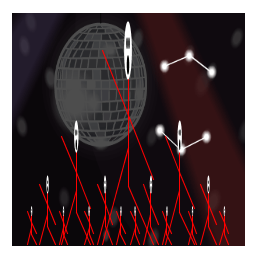 |
 |
 |
| Chris Quintana My creation is a variant of what is known as the Pythagoras tree, a plane fractal constructed from squares. (Wikipedia) My program draws two of these trees vertically back-to-back. Writing the program involved translating a bit of math into code. |
 |
 |
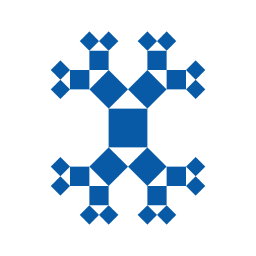 |
 |
 |
 |
| Adam Kravietz This program defines two methods, one that creates a main bunny with randomized color (blue for male and pink for female) and then defines a second method that recursively calls the first method to create an order N bunny "tree". I used the StdDraw methods to create the rectangle body, polygon legs and ears and the circle eyes, iris, tongue and head and then a line for the mouth. |
 |
 |
 |
 |
 |
 |
| Edward Zhang My fractal program generates the Dragon Curve, as described in http://library.thinkquest.org/26242/full/fm/fm.html. This curve caught my attention straight away, as it has a very convoluted shape and it is self-tiling. The idea is to replace a line "base" with a two-line "motif". I used N*2 - 1 to get more interesting results. |
 |
 |
 |
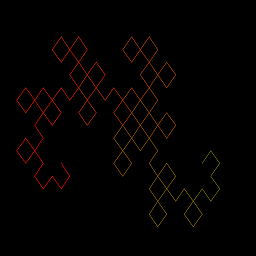 |
 |
 |
| Emily Harmon My artistic creation is an abstract design that resembles a dragon breathing fire. As N increases, the dragon's flame gets larger and more filled out. The "dimension" of the flame is helped along by two rotating tongues of fire per individual fireball. As N increases, the flames rotate more and more to give interest to the overall flame design. |
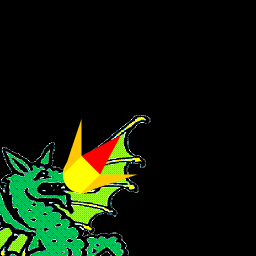 |
 |
 |
 |
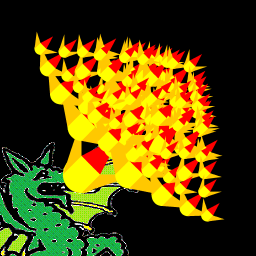 |
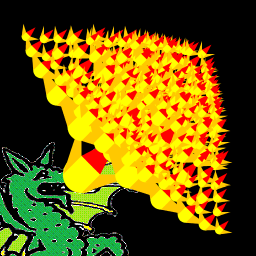 |
| Gavin Byrnes My artistic creation is the family of Aragog from Harry Potter. I began by drawing an acromantula with a body (one circle), two eyes (two filled circles on the body), four curved back legs (eight lines), four straight front legs (four lines), and two pincers (two lines). Each recursion draws five smaller acromantulas in relation to a larger one: two on either side, one directly above, and two below and slightly to either side. The acromantulas build on each other, recalling the scene in Chamber of Secrets in which Harry and Ron are nearly consumed by Aragog's descendants. |
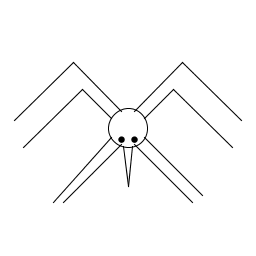 |
 |
 |
 |
 |
 |
| George Che My artistic creation simulates the mutation of an alien virus. This virus mutates each year by adding genetic material to its existing pieces of genetic material. It is composed of a collection of square and circular shaped pieces of genetic material that can be three different colors - blue, orange, and red. I represented all the uncertainties in this idea with random variables. These uncertainties include, shape of genetic material, color of genetic material, how many pieces (1-5) of genetic material is attached to existing pieces of genetic material during a mutation, where genetic material is attached on an existing circular piece, and where genetic material is attached on an existing square piece. |
 |
 |
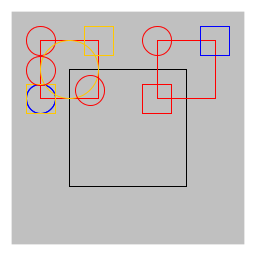 |
 |
 |
 |
| Ilias Giechaskiel I started with a Koch snowflake, which I have seen many times through my mathematical explorations, and I decided that I would try to generalize it into a square, something which would also give ideas as to how to generalize it to a regular n-gon (which it did, but we are only given one command-line argument!) |
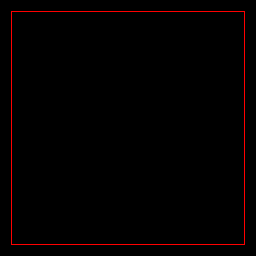 |
 |
 |
 |
 |
 |
| Joanne Chong I wanted to create a representation of something in nature, using randomness. Although I don't really know if lightning is really fractal- shaped, I thought it could somewhat be looked at in that way. |
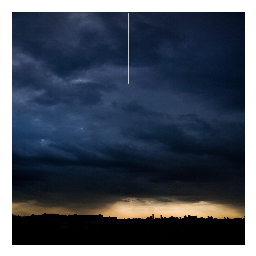 |
 |
 |
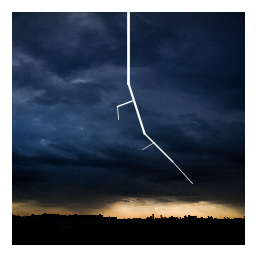 |
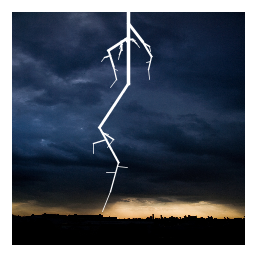 |
 |
| James Joy My artistic creation is a fractal composed of squares with squares rotated by 45 degrees around each vertex of the square. For values of N of 7 or 8, the fractal begins to take on a snowflake shape. |
 |
 |
 |
 |
 |
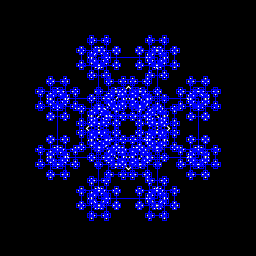 |
| Catie Bartlett I created a fleet of sailboats, each constructed from triangles, rectangles, and trapezoids. The use of polygons made it easy for me to scale the figures to create different sized boats and the illusion of depth. I used the booksite to find out which colors were available in StdDraw. I also used an image from the internet, |
 |
 |
 |
 |
 |
 |
| Michael Thomas My fractal treats the square drawing area as four isosceles triangles and draws a diamond (square rotated 45 degrees) in each triangle, which leaves two smaller triangles. It recursively draws diamonds in each of those, and so on. While there are still n >= 3 generations to go, it also uses the center of every diamond drawn as a canvas for an entire nested fractal with n - 2 generations. |
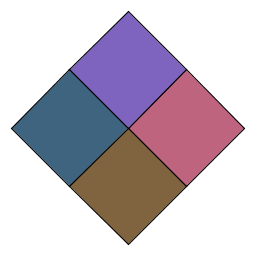 |
 |
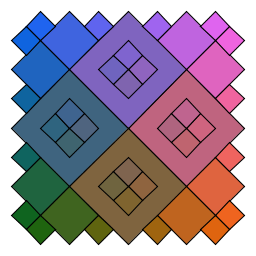 |
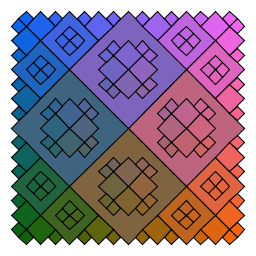 |
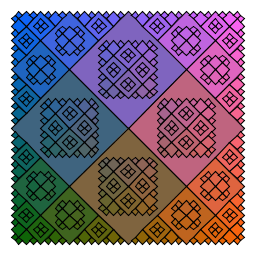 |
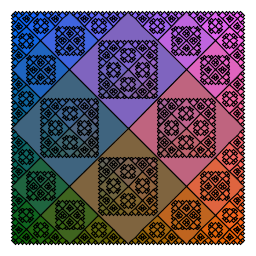 |
| Ray Wang My artistic creation is a tree that has fruit on the ends of its branches. The idea of making a tree is present in a book in my area, but the code is entirely my own. |
 |
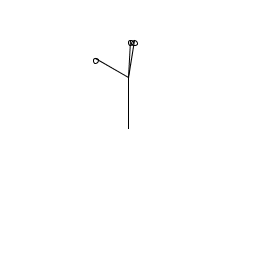 |
 |
 |
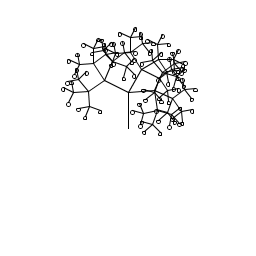 |
 |
| Bohao Liu My artistic creation first draws a tangent graph by plotting 100 points between -pi/2 and pi/2. Then, four other tangent graphs are drawn at each of the corners of a square of side s centered at 0,0. Each of these tangents are rotated slightly. Recursion is then used to draw four more tangents all rotated more at each of the corners of the square with side s/2 and centers at each of the corners of the previous square of side s. |
 |
 |
 |
 |
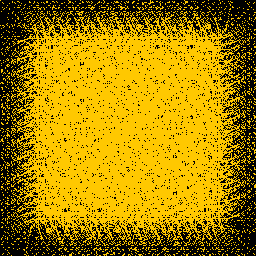 |
|
| Cassandra Taylor I made a Valentine's Day lace design. Each heart is surrounded by 8 other hearts in a circle, at decreasing size but proportional distance away. I referenced the book to review StdDraw techniques in order to draw the heart. |
 |
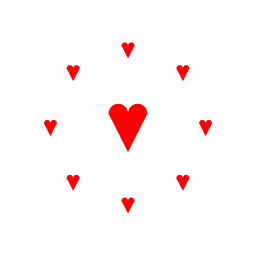 |
 |
 |
 |
 |
| Elizabeth Shoenfelt I wanted a series of colorful circles that would surround (but slightly overlap) a center circle and would have progressively smaller radii. To create this I drew a center circle and had four recalls of the recursive function that shifted the additional circles out from the center and made their radii smaller. I made each corner circle a different color within the recursive function as well. |
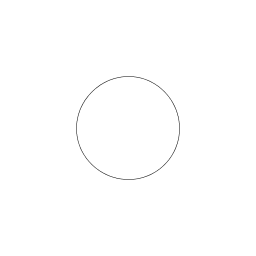 |
 |
 |
 |
 |
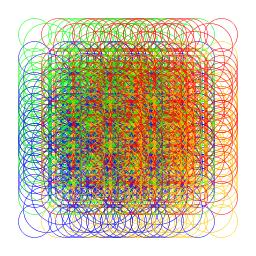 |